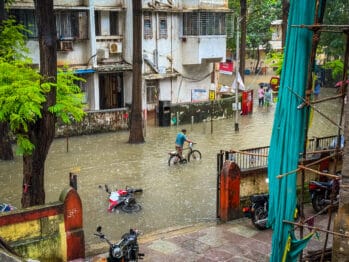By Dino Grandoni and Melina Mara
ALTOS DE CAMPANA NATIONAL PARK, Panama — Brian Gratwicke’s lunch box was full of frogs.
Kneeling on the muddy rainforest floor, the biologist opened his red Coleman cooler and scooped one up. It was a Pratt’s rocket frog — about the size of a walnut, sporting black-and-white racing stripes. Gratwicke deposited the frog in a small mesh tent, a “catio” for indoor pets to glimpse the outdoors, and encouraged it to acclimate to its transitional home.
“There you go,” he told it. “Look at all that nice leaf litter.” The frog darted into the carpet of leaves, unaware it had just leaped into a high-stakes experiment.
Gratwicke is a conservation biologist who leads amphibian work at the Smithsonian’s National Zoo and Conservation Biology Institute. He had flown to Panama, in the middle of rainy season, to help resurrect frog species that had vanished from the cloud forest decades ago.
Whether these amphibians can strike out on their own and thrive here again is uncertain.
What is becoming increasingly clear is that without them, humans are in trouble. It turns out that frogs — in biblical times regarded as a plague — are actually guardians against disease.
As dozens of frog species have declined across Central America, scientists have witnessed a remarkable chain of events: With fewer tadpoles to eat mosquito larvae, rates of mosquito-borne malaria in the region have climbed, resulting in a fivefold increase in cases.
The discovery of this link is part of an emerging area of research in which ecologists and economists are trying to calculate the costs of species decline.
They are revealing hidden ways that thriving populations of many plants and animals — including wolves, bats, birds and trees — underpin humanity’s well-being.
They are learning that without saving nature, we cannot save ourselves.
…
In the United States, researchers have shown that a collapse of insect-eating bat populations prompted farmers to use more pesticide on crops, which in turn led to a higher human infant mortality rate.
Around the Great Lakes, the reemergence of gray wolves has had the surprising effect of keeping motorists safe. The canines prowl along roads while hunting, spooking deer from crossing and reducing collisions with cars.
Also in North America, invasive emerald ash borers devastated ash trees, contributing to elevated temperatures and an increase in cardiovascular and respiratory deaths.
India may have witnessed the most astounding ecological breakdown of them all. After vultures experienced a mass die-off, the livestock carcasses they once scavenged piled up. Packs of feral dogs took the place of vultures, resulting in a rise in deaths from rabies.
Eyal Frank, a University of Chicago economist who helped connect the dots in the bat and vulture case studies, said we often don’t realize how crucial a plant or animal is to our well-being until it is gone.
“Why preserve biodiversity?” Frank said. “We might not realize now that this species is important. But we might realize in the future that it’s important.”
























